Australia So Much to See


Sturt National Park

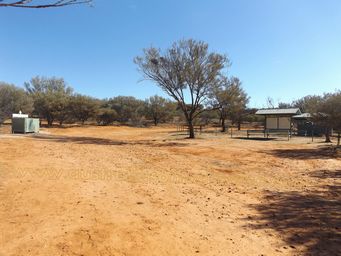
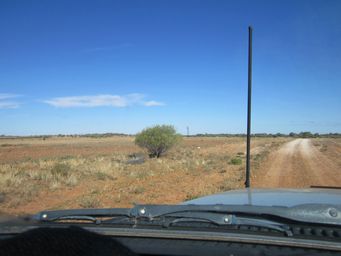
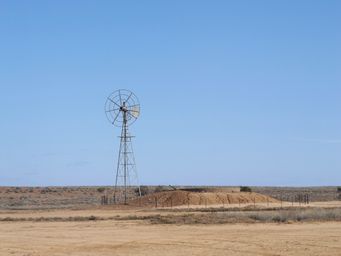
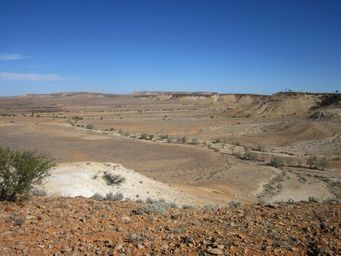
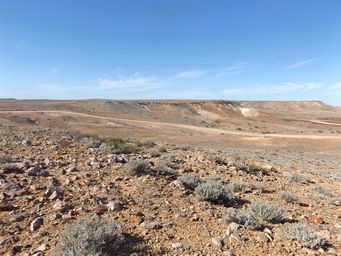
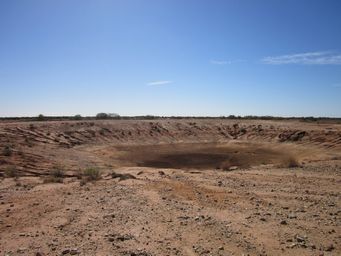
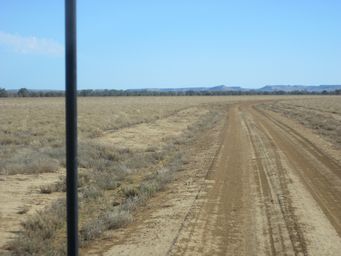
Dead Horse Gully campground turnoff is one kilometre north of Tibooburra on the west side. Near the campground is Golden Gully
former mine site. Here reconstructions and plaques explain mining processes.
The Sturt National Park is divided
by the Warri Gate Road from Tibooburra, with different drives either side, entering or leaving twenty kilometres north of Tibooburra.
This first section is known as the Jump-up Loop Road, following dry creek lines to the Jump-up where the Grey Range is crossed. From here, it is a short drive east to return to the Tibooburra Warri Gate road, 45 kilometres north of Tibooburra. The alternative
is to continue, as we did, by heading west along Middle Road.
Now back to the Jump-up and Middle Road drives.
Water was essential to run livestock in this very dry climate, and remains
of earth tanks, wells and windmills are dotted through the park. Most were dry. Here we see new windmill with the blades
removed. The dam is fenced so we were unable to see if there was water present. We are driving through what was once Mount
King Station which covered an area of 268,840 acres (108,000 hectares). This station was the first to be resumed into the National
Park. The buildings have been removed, with only a dam and a tank remaining. The site is signed.
The Grey Range comes into view as we approach the Jump-ups. The Grey Range is a relatively low range that extends from near
Tibooburra to just west of Blackall in Queensland. It is a watershed between east and west. Formed 25 million years ago
when silt filled the valleys, it formed a hard crust. Subsequently the surrounding land was eroded away over millions of years,
leaving the flat hard crust and the breakaway hills of the range.
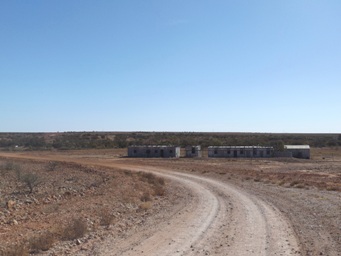
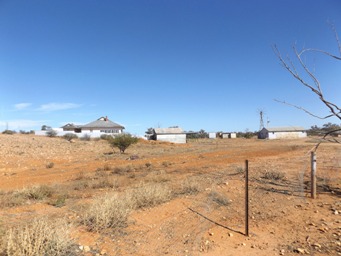
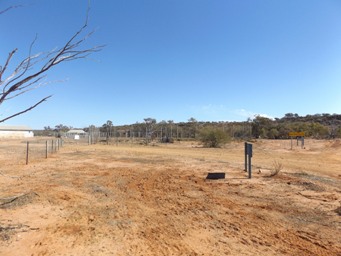
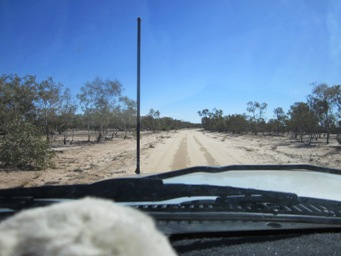
A little further along the jump up road, we reach Olive Downs shearers quarters on the right, and Olive Downs Homestead complex signed as Private on the left (below). A windmill without blades similar to one seen at the former Mount King station appears to be at the water source for the Homestead. There is a disused tennis court near the homestead (below right), from a time when remote people made they own entertainment.
Just after the shearers quarters, the loop road heads east to meet the Warri Gate –
Tibooburra Road, and Middle Road commences heading west. This is signed as 4WD only, but in dry weather the well maintained
road was suitable for all traffic.
Olive Downs was taken up during the 1880s, and was initially 92,000 acres (around 37,000 hectares), but was later combined with other
stations, including in Queensland. Olive Downs was incorporated into Sturt National Park in 1973.
From Olive Downs Homestead,
the road bears north and almost meets the Queensland New South Wales border, where the Dog Fence can be glimpsed.
We passed dry earth tanks like Halfpenny Tank (above left), and the road varied in colours or orange and cream as we crossed the former
station land (above right). Middle road shares Toona Gate Road for a while. A windmill is at Binerah Well then we passed the
ruins of Binerah Station, which was incorporated into the park in 1976.
We then reached and travelled north for a while on the Fortsville Gate Road before turning west again on the Dunes Scenic Drive to
Cameron Corner.